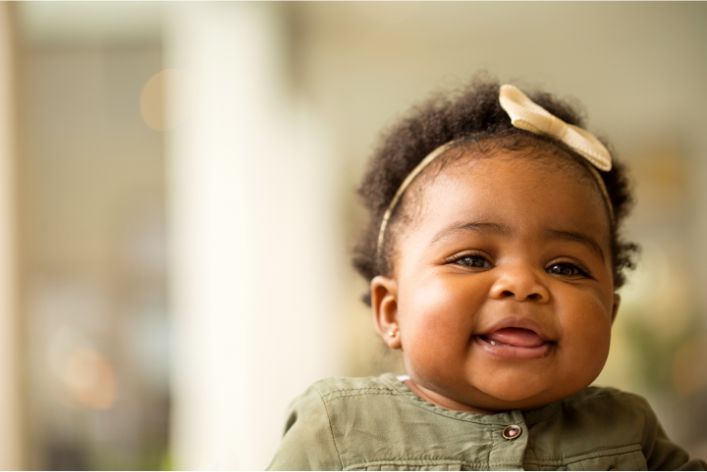Introduction
The purpose of this blog post is to shed light on the typical physical milestones of a Nigerian childhood. Growing up, children go through various physical changes that signify their development into adulthood.
Understanding these milestones can help parents monitor their child’s growth and development better.
In Nigeria, childhood is a time marked by various cultural practices, family traditions, and social norms that have a significant impact on the physical growth and development of children.
From birth to adolescence, Nigerian children experience several milestones that are unique to the country’s cultural and environmental setting.
From learning to walk and talk to reaching puberty, physical milestones play a crucial role in a child’s development.
As a parent or caregiver, it’s essential to understand all the physical milestones that children experience in Nigeria. Through this blog post, we will outline some of the critical physical milestones that Nigerian children go through.
If you’re a parent or caregiver with a child in Nigeria, understanding these milestones will help you monitor your child’s growth and development better.
For anyone curious about Nigerian culture or what typical childhood entails in Nigeria, keep reading for an insight into the different physical milestones Nigerian children experience.
Read: Nurturing Respectful Kids: Discipline Tactics in Nigeria
Infancy
Infancy is an important stage in a child’s life. During this stage, several physical milestones occur, which are critical for healthy growth and development. In this section, we will discuss the physical milestones that occur during infancy.
Growth Patterns
- During the first year, infants typically grow at a rapid pace.
- Most babies triple their birth weight by the end of the first year.
- The average length of a newborn baby is around 20 inches, and by the end of the first year, most babies will have grown to around 30 inches in length.
Gross Motor Skills
- During the first month, infants can lift their heads briefly while lying on their stomach.
- By 2-3 months, they can lift their heads and chest while lying on their stomach.
- By 6 months, infants can sit with support and pull themselves to stand.
- By 9 months, they can stand briefly without support.
- By the end of the first year, most infants can crawl, walk while holding onto furniture, and even take a few steps on their own.
Fine Motor Skills
- Newborns have limited control over their hands, but by 2-3 months, they can hold onto objects briefly.
- By 6 months, they can hold objects and transfer them from one hand to the other.
- By 9 months, they can pick up small objects with their fingers.
- By the end of the first year, most infants can use their fingers to point, poke, and even attempt simple gestures like waving.
Impact of Cultural Practices
Cultural practices and traditions may impact the physical milestones that occur during infancy.
For example:
- In some cultures, infants are swaddled tightly, which may impact their ability to move around and develop gross motor skills.
- In some cultures, parents encourage babies to sit up at an early age, which may impact their spine development.
- In some cultures, infants are given custom-made shoes or boots that may impact their ability to walk and develop gross motor skills.
In short, infancy is an important stage in a child’s life. During this stage, infants experience rapid growth and develop numerous physical milestones that are critical for healthy growth and development.
Parents and caregivers should provide a safe and stimulating environment to encourage their child’s development.
Read: A Roadmap to Nigerian Children’s Cognitive Milestones
Parenting Made Just for You
Get personalized Parenting Solutions tailored to your child’s needs. Transform your parenting journey with expert guidance in 1-3 days.
Get StartedToddlerhood
During toddlerhood, which occurs between ages 1 to 3, a child’s physical milestones become more apparent. This stage marks a period of rapid growth, increased activity, and new motor skills development.
Growth Patterns
During this stage, a child’s height and weight are key indicators of their overall growth. On average, a toddler grows approximately 3 inches in height and gains about 4 to 6 pounds each year. Growth spurts may occur more rapidly at certain times, and a child’s individual growth rate may vary.
Gross Motor Skills
Toddlers begin to develop their gross motor skills and coordination as they gain more control over their bodies. At this stage, they learn how to walk, run, jump, and climb stairs. They may also show an interest in playing with balls, pushing and pulling toys, and riding tricycles.
Fine Motor Skills
Fine motor skills development during toddlerhood is characterized by improved hand-eye coordination and dexterity. Toddlers learn how to use utensils, stack blocks, and solve simple puzzles. They may also enjoy coloring or drawing with crayons and playing with finger paints.
Cultural Practices
Across Nigeria, various cultural practices or traditions may impact a child’s physical milestones. Some communities may prioritize different developmental milestones or engage in activities that encourage motor skills development in unique ways.
For example, in certain regions, children may participate in traditional dance or sports that require balance and coordination.
It’s important to note that while physical milestones are important, developmental variations among children are normal and should not cause undue stress or concern.
As toddlers grow and mature at their own pace, parents or caregivers can provide ongoing support and encouragement to help them reach their full potential.
Read: Decoding the Development of Your Child: A Nigerian Perspective

Preschool Years
During the preschool years (ages 3 to 5), Nigerian children experience a host of physical milestones that mark their early development.
Growth Patterns
- At this age, children typically grow about 2 to 3 inches per year.
- They also gain about 4 to 5 pounds each year.
- Boys and girls tend to grow at similar rates during this stage of development.
Gross Motor Skills
- Preschoolers develop increased coordination and balance.
- They learn to walk, run, jump, and hop with greater control.
- They can catch and throw a ball, as well as climb and slide on playground equipment.
Fine Motor Skills
- Children refine their hand-eye coordination and dexterity.
- They can draw simple shapes and write some letters.
- They also learn to manipulate small objects like buttons and zippers.
Cultural Practices and Traditions
- Some Nigerian cultures emphasize early independence and encourage children to walk and talk at earlier ages.
- This may result in some children achieving physical milestones sooner than their peers.
- However, cultural attitudes towards physical development may also vary based on region and family background.
It is important to note that every child develops at their own pace and may meet these milestones earlier or later than expected.
As such, parents should seek the advice of a pediatrician if they have concerns about their child’s physical development.
In addition to addressing physical milestones, it is also essential for parents to encourage their children’s emotional and cognitive growth during these formative years.
By providing a safe and nurturing environment, parents can support their children as they continue to learn and grow.
Unveil the Perfect Name that Tells Your Family's Story
Let us help you find a name that embodies your family's values, traditions, and dreams. Our personalized consultation weaves cultural insights to create a name that's uniquely yours.
Get StartedRead: Local vs Global: Developmental Milestones in Nigeria
Early Elementary School Years
During the early elementary school years, typically between the ages of 5 and 8 years old, children experience a host of physical milestones that are critical to their overall development.
Growth Patterns
One of the most significant changes during this time is an increase in height and weight. Children grow about 2-3 inches per year and gain an average of 4-7 pounds per year.
Girls tend to develop earlier than boys, and it is not uncommon for there to be differences in growth patterns between individuals.
Gross Motor Skills
At this stage, children become more confident in their movements and continue to improve their gross motor skills. Running and jumping become more fluid, and they develop greater coordination and strength.
They become more comfortable with activities like riding a bike or playing games that require hand-eye coordination, such as throwing and catching.
Fine Motor Skills
Children begin to develop greater precision in their fine motor skills. Coloring and drawing become more refined and complex, and they gain greater control over small muscle movements, such as tying shoelaces or buttoning clothing.
Cultural Practices
Cultural practices and traditions can have a significant impact on physical milestones during this time. For example, some cultures place a strong emphasis on physical fitness and encourage children to participate in outdoor activities like soccer or traditional dance.
Others may prioritize more sedentary activities like reading or studying, which could impact growth patterns and motor skills.
Overall, the early elementary school years represent an essential time in children’s physical development. With proper nutrition, exercise, and support, children can achieve critical milestones that are critical to their overall growth and well-being.
Read: Nigerian Parenting: Recognizing Delayed Development Signs
Conclusion
As Nigerian children grow physically, they reach certain milestones that mark their developmental progress. These milestones are essential for parents, caregivers, and educators to understand in order to ensure that children receive the appropriate care and support.
One of the first physical milestones is a baby’s ability to hold their head up, typically around 2-3 months. This signals a strengthening of neck muscles and is important for proper development of motor skills.
Babies also typically start to roll over around 4-6 months, crawl around 6-10 months, and walk around 1 year. It’s important for parents to provide a safe environment for exploration and to encourage physical activity.
As children grow, they develop fine motor skills such as grasping objects, drawing, and writing. These skills develop gradually and may require patience and practice from parents and caregivers.
Adolescence is a time of significant physical change. Girls typically start puberty around age 10-11, while boys start around 11-12. It’s important for parents to provide education about safe and healthy decisions during this time.
In a nutshell, understanding these physical milestones is crucial for parents, caregivers, and educators in order to provide appropriate support and guidance for children’s physical development.
Resources such as pediatricians, early childhood educators, and parenting websites can provide additional information and guidance.



